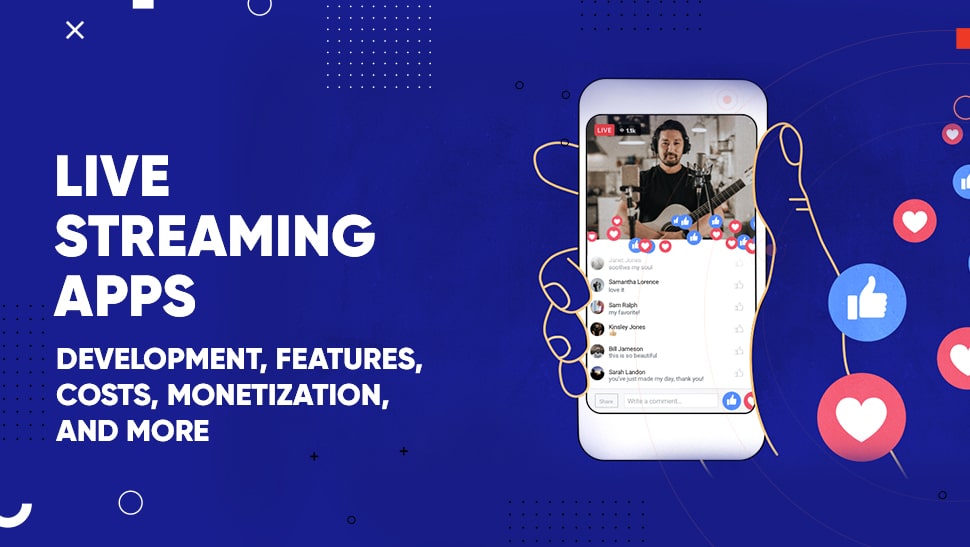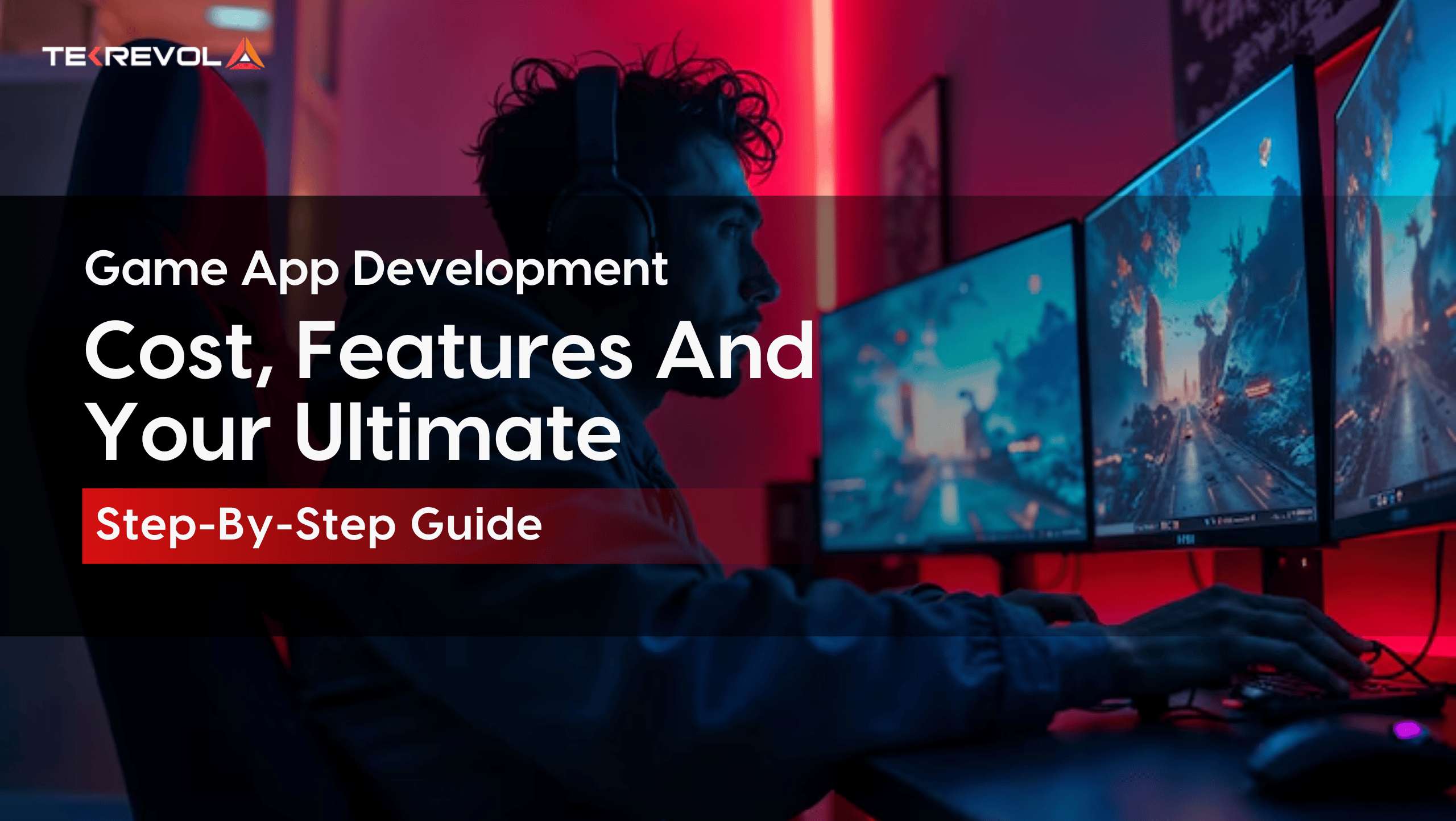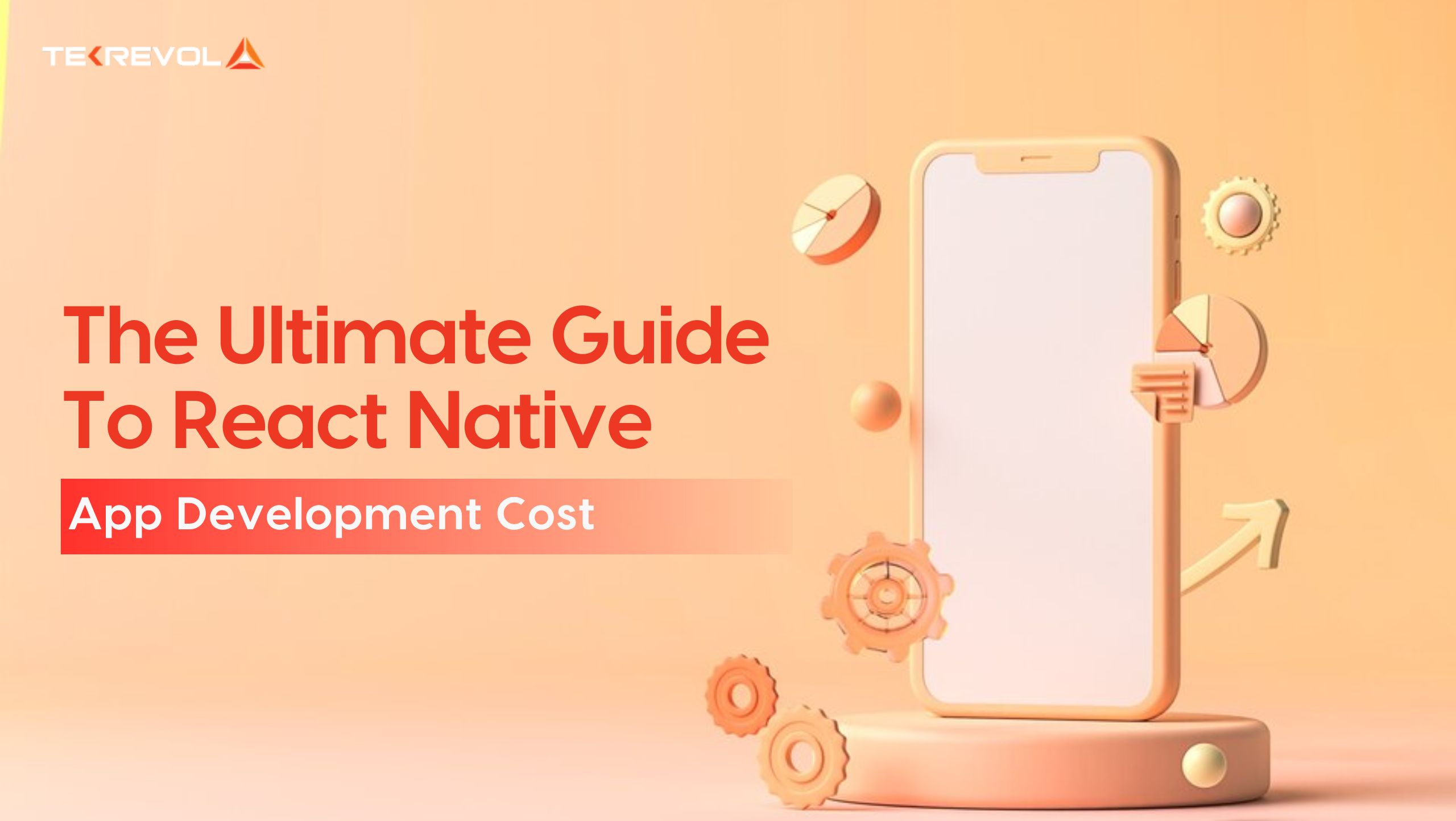Live streaming is a type of media that has been growing in popularity since its inception back in 1995.
Therefore, today, it is safe to say that Live streaming is the new norm in the digital world.
The technology has untapped potential for startups or well-entrenched brands, and they can leverage it to stand out.
Additionally, the global market size of the live streaming market is estimated to surpass the $247,275 million mark by 2027.
This drastic growth and success of live streaming technology is a testament to its viability in the future.
Therefore, now may be a perfect time to start investing in the world of live streaming, and by investing, I mean creating your own live streaming mobile application.
But to build a live streaming app, you need to come up with a revolutionary live streaming app idea, go through the entire app development process and discover the perfect monetization model for your app.
The most technical aspect of the entire process would be to streamline the technology stack necessary for adding features and functionality to your app.
Ready to get your hands on the insightful information included in this blog?
Well, before getting started, let’s sort out a few things like what exactly is a live streaming app.

What Is A Live Streaming App?

Live streaming apps are broadcasting mobile applications used to capture, record, share and stream live video content.
Live streaming as technology can also be considered a bridge that connects influencers with their audiences in real-time.
Additionally, since apps are considered the best medium of communication these days, live streaming technology combined with apps can be the best combination to foster robust communication.
Some of the great examples of live-streaming apps can be Hulu or Netflix.
Furthermore, suppose your business niche is centered around videos, news, sports, or any other related content.
In that case, live streaming apps can be the game-changing innovation that your business needs.
So, if you’re willing to get a live streaming app build to expand the reach or potential of your business, there are some resources, technology stack, and development processes that you need to know first.
But before that, let’s be clear on the type of live streaming application that we’re about to build here.

Image Source: Medium

Types Of Streaming Apps
There are three primary types of live-streaming apps so, when you’ve decided to get a live streaming app for Android or iOS built, you need to be explicit about the type of app that you want.
Here’s an overview of the four types of live streaming applications:
1. Audio Streaming Apps

Audio streaming apps are designed for listeners, specifically, those who love sharing and listening to music without downloading it.
Some examples of audio streaming apps can be SoundCloud or Spotify.
Also, audio streaming apps eliminate the need to download audio files because users can access their favorite soundtracks within the mobile audio streaming app.
2. Live Broadcasting Apps

Live broadcasting apps are built for brands, influencers, or entrepreneurs eager to go live, enabling their audience to enjoy content in real-time.
Within the live broadcasting apps world, you’ve got different options to primarily base your application on.
For example, an app can be created for gamers that lets the audience stream their gameplay live.
The most popular category in the live broadcasting apps can be Facebook Live or Instagram live.
3. Video On Demand Apps (VOD)

VOD or video on demand apps allow the users to live stream video content much like in the audio streaming apps – the only difference being that in VOD, audio is replaced by video content.
Furthermore, perhaps the most attractive feature of VOD apps is the control it gives to the users in terms of the user’s ability to view the content as they please.
The best example of a VOD live streaming app? Well, Amazon Prime Video, of course!
Lastly, the revenue model of VOD apps is based on subscriptions because these apps eliminate ads that users usually come across while watching the same content on other platforms such as YouTube or Televisions.
4. Live TV Streaming Apps
Although Televisions are considered the best medium of communication globally, the recombinant innovation created by a blend of two technologies cannot be denied.
A massive audience loves to watch live TV on their smartphones, which is also convenient, by the way. You can watch it whenever you want, wherever you want.
Therefore, with the last type of live streaming app out of the way, I’m pretty sure that your vision regarding your live streaming app is super clear.
Now maybe a really good time to get started on exploring the resources, technology stack, development processes, and more to ensure that you’ll build the next extremely profitable live streaming mobile app.

Getting Ready To Develop An Industry Redefining Live Streaming App
But before firing on all cylinders, hear this out. You’re tapping into the app development world that is crowded with technologies, implementations, practices, approaches, and competition. All of these aspects can be super-overwhelming for even technical entrepreneurs, let alone non-technical.
Therefore, the best way to get started with developing a live-streaming app would be to team up with a top-notch mobile app development company and develop your live streaming app.
A leading-edge app development company that has extensive experience of years, a diverse portfolio, and a team of innovative professionals would prove to be much more feasible than the D.I.Y. method in this case.
An app development company will strategically move your app project in the right direction, save you from the hassle of hiring the best resources for your app project, and ensure an industry-leading digital product.
That said, if you still want to build a live streaming app yourself, keep reading as there are a lot of details that you must know before getting started.
Tools That You’ll Need For Your Live Streaming App
It’s implied that some tools and expertise are required when it comes to building an app.
And for different apps, developers need different technologies and tools to integrate specific functionalities and features to create a standardized experience for the audience.
For live streaming apps, here’s a list of tools that you’ll need along the way:
A Protocol – RTMP Or API
Like a website needs a protocol to establish robust communication and exchange of data between different devices, live streaming apps for Android and iOS require a protocol.
And from the live-streaming app’s standpoint, there are two choices available for protocols: ‘RTMP and API.’
You have to select one out of the two of them.
Let’s go through both of them one by one to understand what exactly is their purpose:
RTMP
The term RTMP is short for Real-Time Messaging Protocol, initially launched by Macromedia, now owned by Adobe.
The RTMP protocol transfers a video from the encoder and to an OVP (online video platform).
Another critical detail about RTMP is that the protocol sends the stream to a platform that doesn’t recognize you, so it can’t generate comments from the streaming platform.
API
Application Programming Interface, commonly known as API, is a bridge between a tool and an online video streaming platform.
An API allows you to schedule, start, edit, and delete a live video within seconds, which means you’re in complete control of the video.
Software Development Kit (SDK)
An SDK is a complete set of tools that are required to build a mobile app from scratch.
It includes documentation relevant to your mobile app, codebase samples, processes, app testing tools, and guides to help you build the app with maximum ease.
An API or RTMP is a set of instructions, and an SDK is the set of tools you use to build a mobile app and integrate with your API or RTMP.
A Video Player
Next stop, is a video player that will support video streaming on your Android and iOS live streaming app.
I recommend integrating the HTML5 video player to add this functionality because it is customizable and easy to embed.

The Development Phase Of Your Live Streaming App
With the necessary tools all streamlined, let’s start building the perfect live streaming app – starting with picking a CDN.
1. Pick A CDN
A CDN or Content Delivery Network is a distribution network that provides speedy accessibility, performance, and availability to the users.
App developers usually skip this step, but I strongly recommend using a CDN so that your app can continue delivering content without and lags or downtimes.
1. Choose A Video Host
Obviously, you need a video host to broadcast your video content to online viewers to build a live streaming app.
So, the selected video host needs to be efficient and easy to use for your customers.
Furthermore, quality is yet another critical aspect to consider while choosing a video host because there’s a lot of competition in the live streaming domain.
To disrupt the live streaming app industry, you need to have all the advantages you can get.
Furthermore, since experience is widely considered a significant factor that decides the fate of apps or any other digital asset, a video host primarily boosts the experience of your app.
Therefore, you need to get the best video host for your live streaming app.
2. Storage Options
As the user base of your live streaming app grows, you’ll need more storage space as the abundance of data can sometimes affect the performance of applications.
Also, by offering safe and reliable storage to your customers, your app will deliver a feeling of being a one-stop solution for all your audience’s content needs
Therefore, a storage option is integral.
Additionally, the best storage option is to leverage cloud storage.
Cloud storage is safe, faster than local storage, more affordable, eliminates the need for hardware and the customers have the option of upgrading their storage whenever they want.
The best part?
Well, cloud storage gives an app an innovative touch. In a nutshell, it acts like a value proposition that the users love.
3. Creating A Revolutionary UI/UX Design
As Steve Jobs said, “You’ve got to start with the user experience and work back towards the technology.”
Apple really did begin with the customer experience, and their success is a testament to their immeasurable success.
Similarly, when crafting an appealing UI/UX for your live streaming app, I recommend keeping seamless navigation, functionality, impactful features, and a clean interface in mind.
Don’t add too much text or visual content, don’t feature-bloat your app (more on this later), and don’t confuse the users.
4. Integrate Core Features
From the audience’s perspective, hundreds of features integrated into a single mobile app are not preferred.
In fact, this practice is commonly known as feature-bloating, which diminishes the psychological value of the app.
So, for the feature integration phase, here at Tekrevol, we believe in reinventing existing features of the market-specific app.
Our developers harness the power of well-developed and emerging technologies to create features that are leading edge.
We don’t generally reinvent the wheel, but we do believe in surpassing the standards of the existing features of a particular digital product to make sure that the new features are innovative.
Similarly, for a live streaming app, there are some primary features that it should have.
Once you’ve created the features that are ready to redefine industry standards, you’ll be testing them, and the best way to test these new and improved features is by creating a prototype or an MVP of your app.
Moreover, here’s a list of the features that your app should have:
- Signup options (including third-party logins for faster account creation)
- Profile creation
- Live streaming options
- Recommendation features
- Unique content
- Chatting option
- Search functionality
- Notifications
- Screen sharing
5. Testing Your Live Streaming App
It takes just one bad experience for users to leave your app and hop on to the competitor’s app.
Therefore, to minimize the negative impact of your live streaming app, I suggest that you opt for comprehensive Q/A sessions to validate the experience and usability of your app.

Integrating Advanced Features To Your Live Streaming Apps
Finally, after integrating the conventional features that your app must have, here’s a list of specific features that belong to the live streaming apps genre in which you can foster innovation.
1. Streaming
Make sure your streaming process is extraordinary and beyond.
Let’s go back to when we talked about RTMPs and APIs, the protocols used to transmit your stream to viewers.
Here’s how the streaming functionality works for your app:
- The media player connects with a server.
- A connection is established.
- The server sends a video file in response to the connection.
- The video is broadcast to an infinite audience.
And to do this without any interruption, make sure you have a substantial bandwidth.
The standout feature that you can add related to streaming to your live streaming app is the “Save for later” feature.
The feature will allow users to interact with your live streaming app whenever they please and watch content from their favorite streamers anytime.
However, to store such large amounts of data, you need a reliable storage option that we’ve already covered above, the cloud storage option.
2. Video Quality
Another thing you can do to stay ahead of your competitors is offer compelling video quality.
Also, there are specific measures that you can take to ensure that the video quality never drops because there will always be some users who have a poor internet connection, resulting in less bandwidth compromising the video quality.
So, what can you do to minimize this problem?
The answer is simple, make sure your mobile app can adjust according to streamers’ or viewers’ bandwidth.
Your mobile app should be smart enough to meet the demands of the users with a low and high bandwidth using the video encoding algorithm.
3. Advanced Search Features
Every mobile app has a primary search feature, which users use to find content.
However, because there’s always room for improvement, you can make the search functionality currently existing in the market even more advanced.
The main idea is to give the users relevant results related to the term they’re using to search within your app.
You can let your app perform this specific action by enabling it to learn from the user’s search history, patterns, or viewed components and give appropriate or matching results to them for their specified keyword.
In this way, the users will have at least something to look or skim through, removing the possibility of reaching a dead-end where there’s nothing to show.
Some Sorting Options You Can Integrate Are:
- Geographic filter
- Popular streamers
- Trend based content
- Interest-based recommendations
High-End Privacy
To ensure your streamers have a safe space to do live broadcasts, I recommend giving them a standout feature through which they could limit their audience.
The streamers should be allowed to broadcast to whoever they want, whether it’s a large audience, one person, or a particular group of viewers.
A famous example is Discord, an instant messaging app for gamers and streamers, which offers this same functionality in servers.
The servers have specific channels where streamers can choose to add whoever they want and broadcast to them.
Host Third-Party Streams
There are times when streamers don’t have something to broadcast daily.
And I think everyone deserves a break from their routine to try something different.
What if your app could give streamers a chance to collaborate? Help each other out? Share ideas with each other regarding their content?
Sounds great, right?
Here’s what you can do!
Integrate a feature for streamers to host other streamers on their channel.
This will help new streamers gain recognition.
Also, the collaboration would enable your app to build a massive audience as streamers have their specific audience.
Also, to enable this feature in your app, you can charge a monthly fee from the streamers. So, here’s another revenue model, which is more commonly known as ‘In-app purchases.’

How To Make Money From Your Live Streaming App
It’s a fact, you’re developing a live streaming app to make money because you can’t get investors without showing profits, right!
So, how can you monetize your live streaming app?
Here are some popular ways to make money through your app:
Paid App
You can ask your audience to pay a certain amount to install your live streaming app on their smartphones.
Moreover, to encourage your users to buy the app, you can offer a free trial so that they could determine what your app is capable of.
Freemium App
In this revenue model, users can download the app for free and use it.
However, they’ll be required to pay a specific amount to unlock the premium features of the application.
Want a pro tip to make this revenue model succeed? Here it is.
Ensure that the features you’re letting the users unlock value for money; otherwise, this monetization model would fail miserably.
In-App Advertisement
You need to have a particular audience interested in a specific product or niche for this revenue model.
While leveraging this revenue model, you’ll either earn through affiliate marketing or by letting the users go ad-free by paying a small fee.
Moreover, we’ve got an entire blog on the most lucrative revenue models that apps should have.
You can check it out here to get more advanced details on the what, why, and how of app revenue models.

In Conclusion
Phew!
That was one technical article that we just went through.
All the information mentioned in this blog will surely help you streamline the resources you’ll need in building a live streaming app.
From the introduction to the viability to the six-step breakdown of the live streaming app development process, the stages are perfectly curated to help you get started.
Still, if you’re not sure whether you should get started on building your live streaming app or not, we know a thing or two about creating exceptional digital products for businesses.
- Let’s Make Your App The Next Chart Topper

 3384 Views
3384 Views October 25, 2021
October 25, 2021









